
Kelly Drinnen, Flower Garden Banks National Marine Sanctuary
Morgan Kilgour, Gulf of Mexico Fishery Management Council
Heather Coleman, NOAA Deep Sea Coral Research and Technology Program
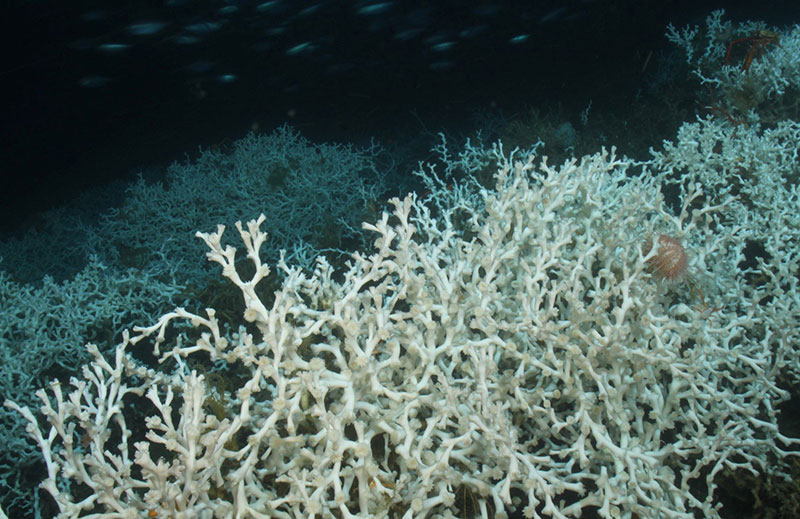
A dense aggregation of the deep-sea coral Lophelia pertusa at 500 meters (1,640 feet) depth in the northern Gulf of Mexico. Image courtesy of Lophelia II Reefs, Rigs, and Wrecks Expeditions, NOAA-OER and BOEM. Download larger version (jpg, 925 KB).
Protecting productive yet vulnerable deep-sea resources like coral and sponge habitats in U.S. waters is an ongoing process. Deep-sea coral conservation efforts, in particular, go back more than 30 years in the Gulf of Mexico. Protection of these resources here and in other regions of the U.S. stems from the Magnuson-Stevens Fishery Conservation and Management Act and the National Marine Sanctuaries Act. In 2007, the Magnuson-Stevens Act authorized NOAA to create the Deep Sea Coral Research and Technology Program to coordinate information gathering and analysis in support of resource management. Read on to learn more about how these components enable deep-sea research and subsequent resource conservation.
Set up by the Magnuson-Stevens Act (MSA), regional Fishery Management Councils determine where, when, and how fishing activities are permitted within U.S. federal waters. Each Council has established its own protected areas for deep-sea coral and sponge habitat, to protect these fragile and long-lived animals and help maintain their function as habitat for commercially harvested fish and invertebrates. The Gulf of Mexico Fishery Management Council is responsible for managing over 100 species of black and stony corals found in federal waters off the five Gulf states.
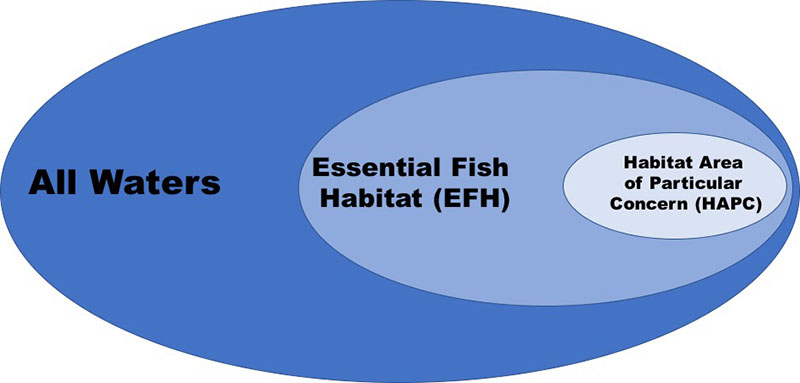
Schematic showing different management categories of fishery resources. The ecological importance and need to manage fishery resources in each category increases from left to right. Image courtesy of the Daniel Wagner/NOAA. Download larger version (jpg, 118 KB).
Some areas of particular ecological importance are considered for special protections known as Habitat Areas of Particular Concern (HAPCs), a process enabled by the MSA. HAPCs are a subset of Essential Fish Habitat (EFH) that provide important ecological functions or are especially vulnerable to degradation. Any human activity (e.g., oil and gas exploration, mining, tourism, fishing) in an EFH area requires consultation with NOAA Fisheries in order to assess the potential impacts of that activity.
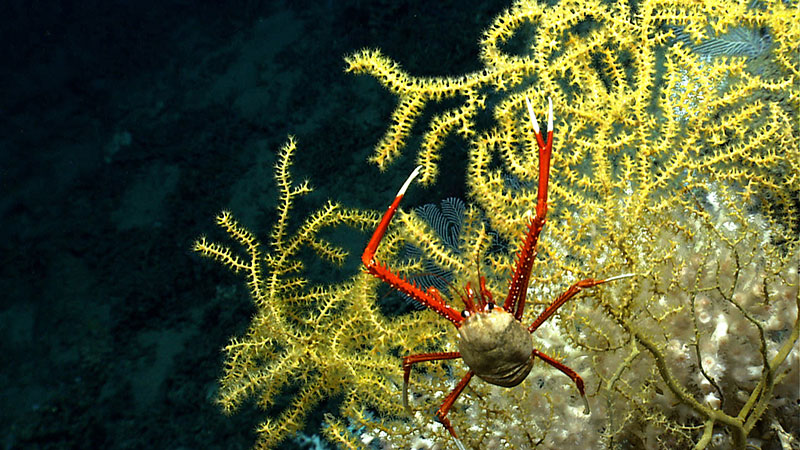
Photograph of deep-sea coral and a squat lobster on the West Florida Shelf in an area currently being considered for designation as a habitat area of particular concern by the Gulf of Mexico Fishery Management Council. Image courtesy of NOAA Office of Ocean Exploration and Research, Gulf of Mexico 2014. Download larger version (jpg, 118 KB).
On its own, a HAPC does not provide any extra protection or regulations, but it does raise the level of consideration given to these areas in the development of management plans. However, an additional level of protection applies to certain HAPCs that harbor coral reefs. East and West Flower Garden Banks, and Stetson Bank and McGrail Bank prohibit all bottom-tending fishing gear and anchoring by fishing vessels.
Designations under the National Marine Sanctuaries Act can protect selected ocean habitats from many different types of impacts. In the Gulf of Mexico, Flower Garden Banks National Marine Sanctuary (FGBNMS) is not only an HAPC, but also protects habitats from illegal dumping of chemicals, trash, etc., anchoring by all types of vessels, removal of resources, damage to resources, and more. It also provides comprehensive monitoring of sanctuary habitats to assess ecosystem health and changes over time.
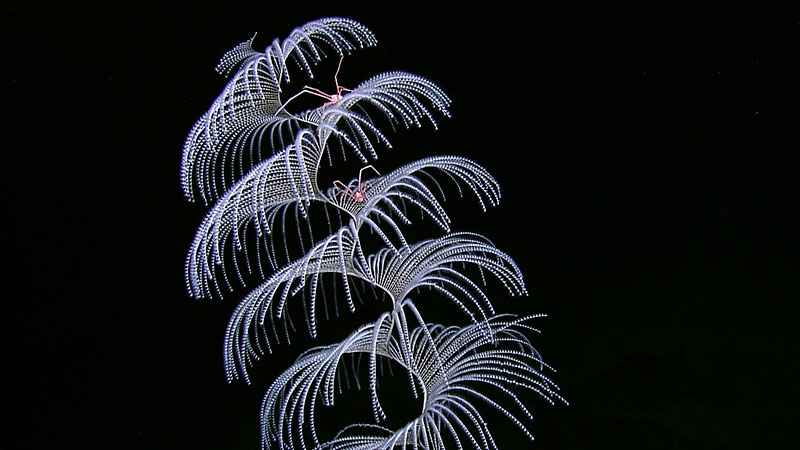
Iridigorgia soft coral with squat lobsters in the northwestern Gulf of Mexico. Image courtesy of NOAA Office of Ocean Exploration and Research. Download larger version (jpg, 1.1 MB).

Euplectella aspergillum glass sponge in the northwestern Gulf of Mexico. Image courtesy of the NOAA Office of Ocean Exploration and Research. Download larger version (jpg, 1.3 MB).
The Gulf of Mexico 2017 and Gulf of Mexico 2018 expeditions will involve exploring and mapping areas under consideration for further protection by the Gulf Council and/or Flower Garden Banks National Marine Sanctuary. Expeditions such as this will shine a light on hidden resources in these areas and provide data needed to assess their candidacy for HAPC, EFH, and/or sanctuary protections. Any consideration for new designations will also include discussions with diverse stakeholders, including fishermen, the oil and gas industry, scientists, and other interested groups.
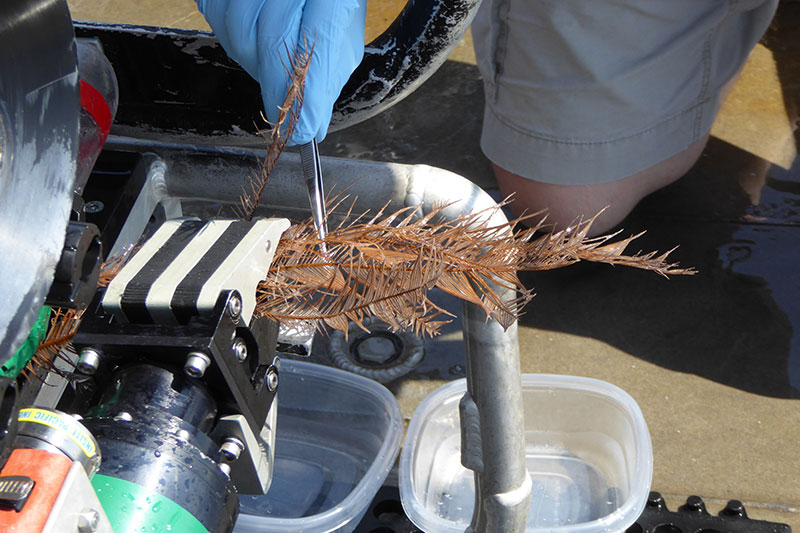
The National Marine Sanctuary Foundation’s Mohawk remotely operated vehicle holding a black coral collected in newly explored areas at Elvers Bank in September 2017. Image courtesy of NOAA Flower Garden Banks National Marine Sanctuary. Download larger version (jpg, 2.7 MB).
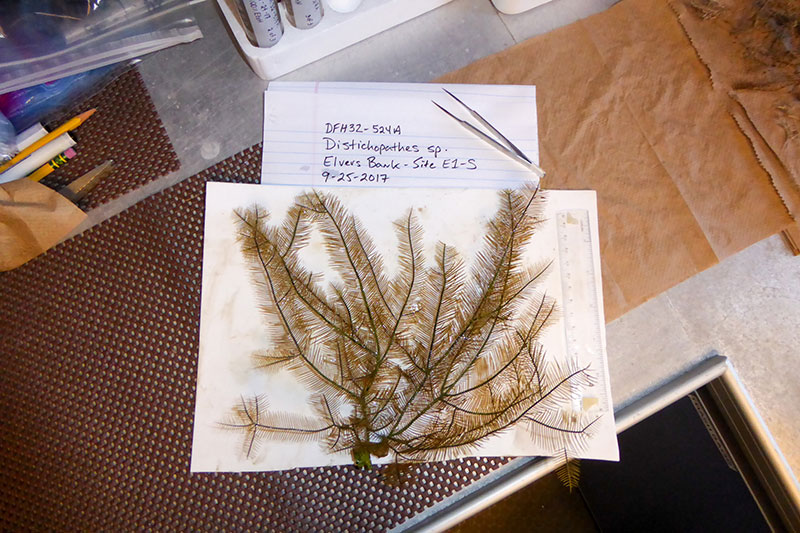
A sample of a potentially new species of black coral (Distichopathes sp.) found in newly explored areas at Elvers Bank. Additional discoveries are possible as we continue to explore new areas. Image courtesy of NOAA Flower Garden Banks National Marine Sanctuary. Download larger version (jpg, 3.5 MB).
For more information on the history and current state of protections established to benefit deep-sea coral, as well as some stunning photos, check out NOAA’s story map . For a comprehensive look at the northern Gulf of Mexico, explore the various layers of the FGBNMS Map Tool.